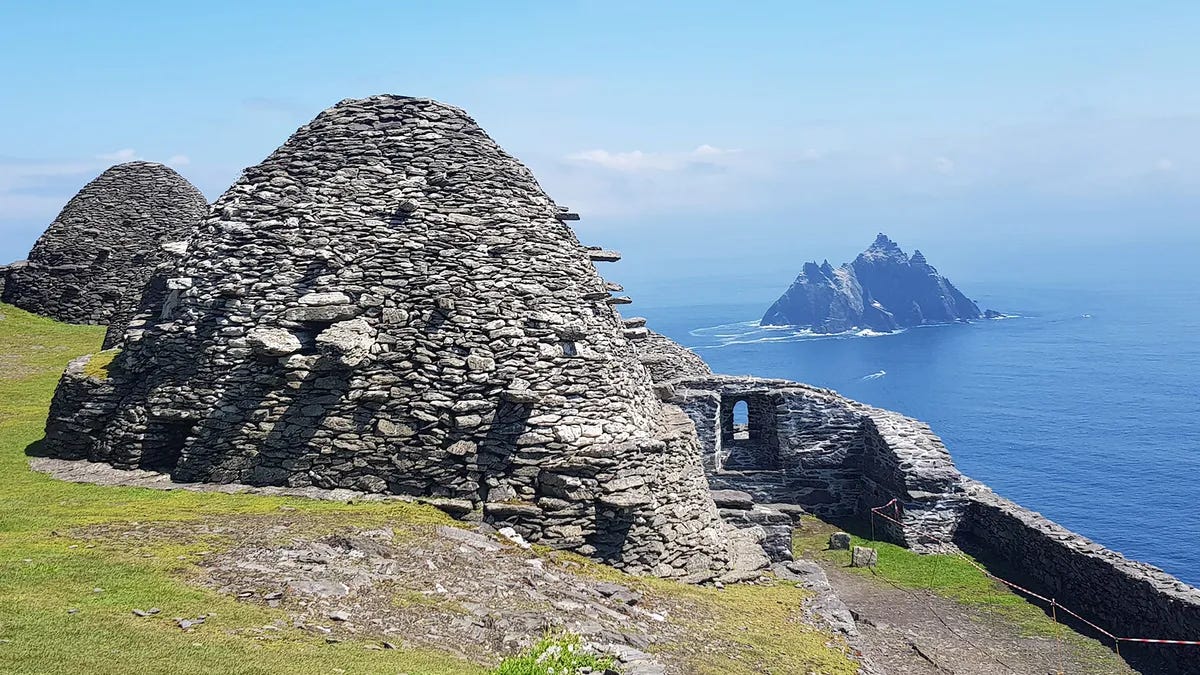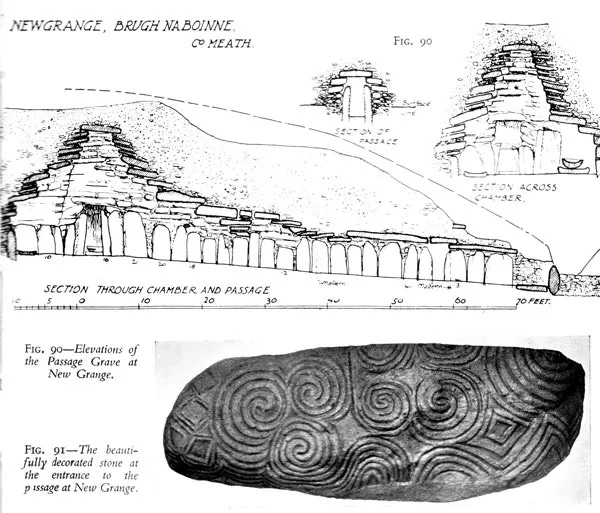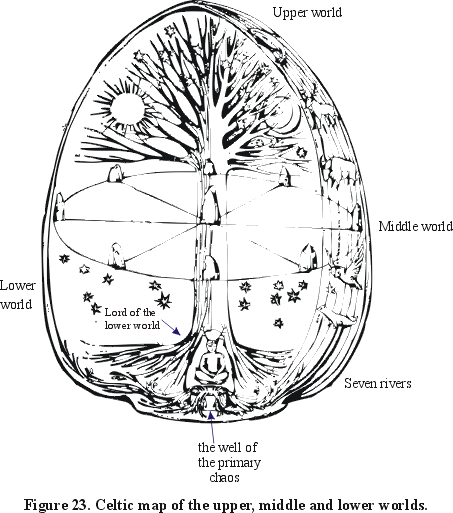Living Resurrection
To enter the darkness, face death, and emerge unto the risen Light as living once again. Initiates once descended and climbed the Tree of Knowledge to attain this feat.
My apologies to all my regular readers. I have allowed my dedication to writing to slip through the cracks.
The truth is that I have been dedicating any scant writing time to personal reflections. This is a potent time of year for myself and there’s a wound I have been delving deep into over the past 18 months. I look forward to writing about this experience and my insights over time - when the time is right.
For now, I will say that I have addressed the main subject of this wound (and related subjects) here in my Substack thread, but I have yet to share on what my personal story is. Perhaps in time.
I share this with you to express, “your struggles are my struggles” - a mantra which came to me many years ago while on a 10-day water fast on the shores of Lago Atitlán in Guatemala.
Suffice to say, there is potency in times of reflection and that is where I have been - off & on amidst various activities and projects that I am responsible for; the untenable balance of a modern life (something perhaps many of us are unlearning for the purpose of coming Home/becoming whole once more).
I now find myself, once again, on such a humble journey. A water fast - a seasonal cleanse, as the sun moves across the sky recently marking the vernal equinox, thus, a pivotal time in our solar year. It’s also a return to my personal practice, a practice inspired by in-depth study, daily meditation and hatha yoga practice, deep connection to Nature, and an internal knowing with a connection to something greater, something ancient.
At the time I began my pursuit of fasting (in my mid-20s), I was seeking spiritual clarity and purification (I wasn’t concerned with cell re-modeling or autophagy at that time). In the process, I became more keenly aware of my physical limitations, and at the least, became more acquainted with deeply seeded fears, or pains, I held - which would reveal themselves and their roots, more thoroughly, in time.
Through these pursuits, I became acquainted with so-called Mystery School Teachings and these inevitably led me back to exploring my relationship to Jesus. Having been raised Catholic, I had little relationship with Jesus beyond the ideas which I had been indoctrinated in. Then I began to seek a relationship with this archetype through what I was feeling within. This was an entirely new experience in this context.
The first book I encountered that began to open my mind in this direction was The Antiquarian Gospel of Jesus the Christ. This book is supposed to have been written from material retrieved from the Akashic record. For those unfamiliar, this record is said to exist within the ethers. It is this “record” from which shamans, adepts, and other healers retrieve information about their patients, or presumably, to which our minds go in the dreaming state when we are recovering pieces of our past or we can see things that have happened when we weren’t there or when our memories are otherwise unconscious.
In this book, I learned about the initiation Jesus went through as an adept in training amongst the wise ones (or “godmen”) of the ancient traditions of Egypt. He traveled to India, Tibet, and Persia to study with the wise ones (men and women) of these great civilizations. If I recall correctly, the book states he traveled to the Americas as well, speaking to the recollections of various tribes across both continents regarding the bearded white one/s who came to bring knowledge and preach on the importance of peace and love (eg. the Hopi story of the return of the great Bahana).
The fundamental narrative is that of a young man’s pursuit of knowledge of himself, Nature, and the elements of creation brought about by education, trial, and ritualistic/ceremonial recovery of the self to become ‘ever-living’, or resurrected in the light of the dawning day, after having traveled to the world of the dead, or the Underworld.
No, I do not know if this particular story is historically accurate or if it’s mainly metaphorical. However, I am aware of this central practice the world over - entering into a tomb (or sarcophagus), usually for 3 days, as an initiate, to arise resurrected from the ‘dead’ to attain a conscious state of wisdom of one’s life and all of Nature, thus, arising as a living one, reborn.
I am currently reading a book I’ve had on my shelf for a few years now. Freddy Silva’s The Lost Art of Resurrection: Initiation, Secret Chambers, and the Quest for the Otherworld. Freddy looks at various traditions across the globe over thousands of years which engaged in a closely related practice of living resurrection.
There are several commonalities across these cultures - and I may contend that there was one original source. Mainly, the practice of entering a mound, cave, tomb, cavern, sarcophagus, etc. as a ritualistic return to the womb which is largely sensory deprived (in darkness, quiet). After spending 3 days within the surrogate womb, the initiate is said to rise from the dead upon the equinox sunrise.
The initiate (‘one to be made conscious’) is brought into this ritual through long preparation and tutelage within the Mysteries. This knowledge of Nature, and oneself, prepares the initiate for this heroic journey to the Underworld in which the experience of death is met, conquered, and the body arises living, or resurrected, upon the dawning of the equinox sun.
To this day, Freemasons incorporate this into their 3rd degree initiation ritual where the blindfolded (unconscious) candidate is raised from a figurative grave and declared “risen”.
Many of these rituals utilized certain plants or natural substances for the purpose of altering the consciousness of the initiate while in this sensory deprived journey into the Underworld. This, along with their training and support of the community, enabled the psyche (and spirit) of the initiate to move into the Underworld, navigate it, and arise victorious not succumbing to the horrors perceived therein.
This practice often took place in so-called tombs, or burial chambers (also called bridal chambers as one wed oneself to the divine virgin). Some of which were quite elaborate, such as the sarcophagi of Egyptian pharoahs wherein they imbibed a brew of the blue lotus root, or very simple, such as the initiation of young women of the Chumash tribe who were put into a small coffin-sized chamber within a rock face while under the guided influence of datura.
This transmigration brought about knowledge of the soul’s origin. Initiates were meant to purify themselves, raising their vibrations such that they could resonate with the frequencies by which they would shift into altered states of consciousness, thus accessing the world of the dead, the Underworld.
We will see that many of these chambers or tombs were shaped like a natural beehive. This was shown in the Star Wars films The Force Awakens (VII), and The Last Jedi (VIII). Luke Skywalker retires to this rocky island to live out his remaining days, perhaps in guilt and shame. This was filmed on Skellig Michael off the Southwest coast of Ireland. An island once inhabited by monks (likely male and female) who dwelt within these beehive shaped structures (clocháins) performing their ascetic rites and rituals.
We can even see in a cross-section of the great Brú na Bóinne, or Newgrange, along the Valley of the Boyne in Ireland, that the main chamber is domed like a beehive. This so-called ‘passage tomb’ allows light to penetrate its inner chamber only upon the rising of the sun on the winter solstice through an opening in a stone box above the doorway (symbolizing the merging of the masculine and feminine - part of what the initiation is composed of). This box is, in fact, marked with the position of the heliacal rising of Venus as well. Venus being the morning star in this regard and symbolic within these traditions of the risen one. The hive of Venus is spoken of in the Orphic mysteries in reference to the immortal love which the initiate experiences on their path of resurrection. In this same tradition, Melissa was the name given to a group of bee nymphs who came to bring civilization to men and bring them out of the state of ignorance. In Ireland, it is written as Maoilíosa which mean ‘servant of Jesus, or Iesa’.
Here we begin to see the ancient associations with Jesus, or Iesa, the risen savior of the old church of Ireland, which according to Irish authors long pre-dated the advent of modern Christianity and Catholicism. This was a religion of the sun. Thus, all resurrections were accomplished in relation to the sun’s rising at a key point - the equinox, a time in which the masculine and feminine would be most naturally inclined to harmonize.
Could ancient Ireland be the home of these traditions spread across the world?
Conventional history does not reveal this to us, at least not on the surface. But there is much more to delve into on this subject. A subject that I plan to return to on my Substack. Over nearly 2 decades my path has arrived here, renewing my relationship to “Jesus” or Iesa while becoming aware of the universality of these practices, even in particular detail from the Americas to the Middle East, to north Africa to Asia, to the South Pacific to the (so-called) British Isles.
One other thing I’d like to point out, as it ties in with my work with the Ogham, is the relevance of crucifixion in relation to resurrection. Crucifixion is a common theme amongst many cultures over millennia. The common narrative goes like this: a son born of a virgin mother who’s coming was heralded by the bright star in the east (Sirius and the belt stars of Orion), escaped death at birth, was initiated into the Mystery teachings, and was betrayed and crucified, died, and resurrected, and is found in such places as ancient Egypt (Osiris), Rome (Mithras), India (Mitra), Persia (Tammuz), Tibet (Indra), or Phoenicia (Attis), amongst others.
In the case of Indra, for example, he is characterized as being embedded in foliage, nailed to a wooden cross, in addition to being shown rising from a tomb/sarcophagus with penetrations on his body. Indra is also associated with a trident, or plasma rays from the sun (this ties in to the concept of Tír Raon which I’ve wrote and spoken about previously)
This concept of being nailed to a cross is also metaphorical, for through the experience of death the initiate navigates through the fount of knowledge represented by the Tree of Life. Within the Tree of Life lies the root of all knowledge of Nature and its elements.
Within the ancient Irish system of communicating - from the sublime to its greatest mysteries - known as Ogham, we have the so-called ‘language of the trees’. Here the resonant sounds articulated by the 20 letter alphabet convey, through resonance, the knowledge of life itself, through the Tree of Life.
It can be demonstrated how the Ogham conveys the reality of a tripartite world cosmology: Upper or Otherworld, Middle World, and Lower or Underworld. All three worlds were divided into various sections within the so-called Celtic cosmology. But it’s important to note this tripartite cosmology is present amongst the Maya, Egyptians, Sumerians, and others as well.
As Jesus, or Iesa, was crucified on a cross of wood (some say cedar of Lebanon - a majestic tree that conveys the power of clarity to the mind and upright integrity) prior to his resurrection, he was symbolically conveying the latent knowledge of the Tree of Life, both within and without, or at least the source of his knowledge derived from the trials and travails he encountered through his 3 day journey into the Underworld.
The Celtic cross is an ancient symbol of this cosmology in two dimensional form. Expanded vertically to create a 3-dimensional model, we find the 3 worlds of the Irish cosmology. In the image below, you can see the divisions of the Upper/Otherworld, Middle World (bith), and the Underworld. Each of which resonates with a particular Ogham fidh, or Ogham character. See the second image of the same cosmology but with the tree inserted to convey the idea of the Tree of Knowledge.
Not only is each section of each world, or plain of existence, related to a specific Ogham fidh (‘few’ in English), but there is an Ogham for each track moving from the Middle world (Bith) to the Otherworld, as well as the Underworld. In this way, the Ogham is the resonant creative sound that conveys the thought that the initiate would learn to inhabit, thus navigate these pathways from one world to the next.
The Ogham is the figurative Tree of Life as well as the literal Tree of Knowledge as a system that connects the initiate, and master, to these pathways of thought that allow one to travel between plains of existence (and, yes, the spine of the human being is a microcosm of this concept). This, could be said, is the more arcane interpretation of the Ogham, as Ogham was also used pragmatically as a form of communication. Look for more posts on Ogham in the near future.
May your pursuit of knowledge be grounded in integrity and authenticity.








There is so much here. Thank you for this reflection. An eternal quest.